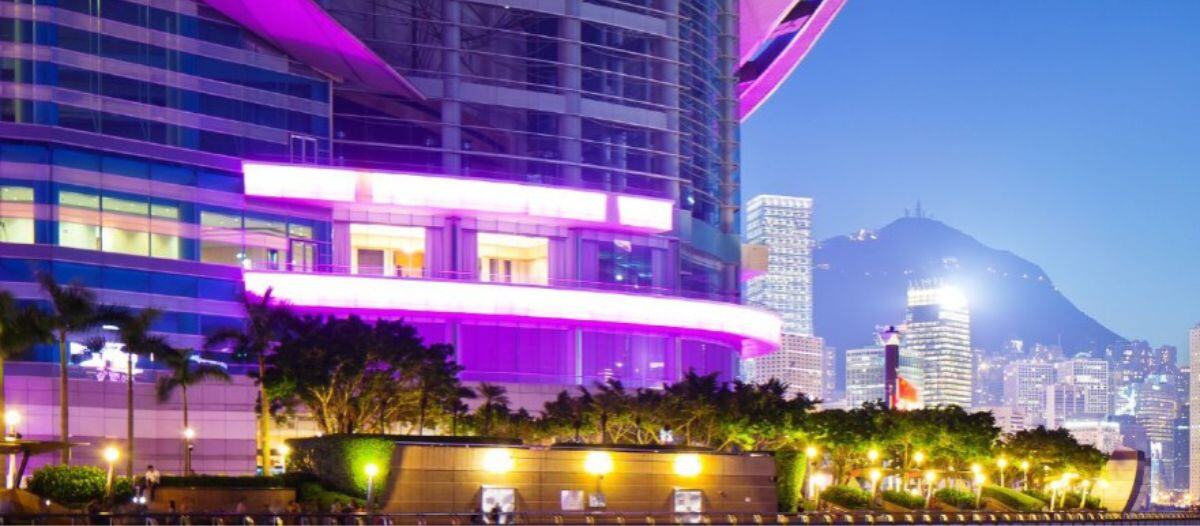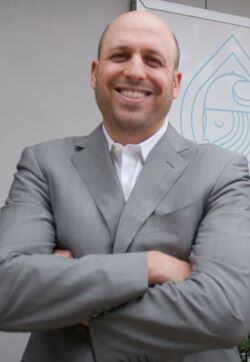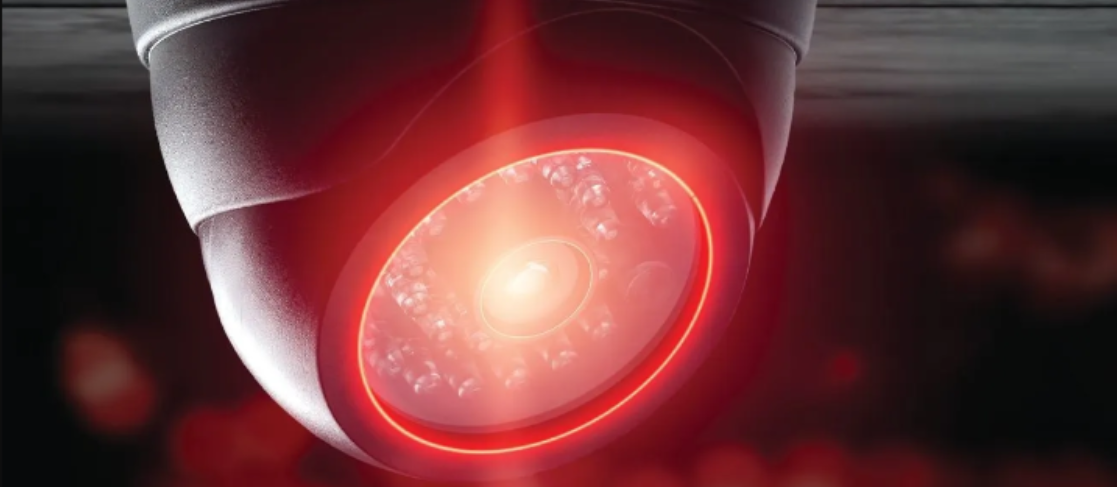Large-scale Facilities
Cleaning without harmful effects on occupants or the environment

For large-scale facility managers, identifying effective cleaning and disinfection solutions has always been essential. Their establishments typically welcome hundreds or thousands of people every day, and many, such as sports venues, major museums, large hotels and the like, are public facing. With so many people cycling through, dirt and germs can accumulate quickly, with heavy costs for public health and institutional reputation.
Finding the right approach at scale was challenging enough before the COVID-19 pandemic, but even more so today. Visitors and employees have never been more attuned to sanitization protocols or more adamant that their public spaces be clean.
As a result, many businesses have dramatically increased the frequency with which they clean and disinfect. This trend is problematic for large-scale facilities, the sheer scale of which makes it difficult to meet the increased demand – and perhaps even more problematic if they do.
A football stadium or a multi-office corporate headquarters does not just have to swallow the massive financial costs of doubling or tripling the amount they clean; their size means they must also grapple with the long-term health and environmental effects of releasing so many more toxic chemicals into the built environment and beyond.
As they weigh pandemic-era cultural expectations on the one hand, and their negative externalities on the other, facility managers may wonder where to turn.
New approaches and innovative technology have provided a solution that eliminates the conflict entirely. First, it is necessary to understand the drawbacks of conventional cleaning practices – and the way new technology is enabling us to move past them.
A failing status quo
Two world wars caused shortages in the naturally derived products used to manufacture traditional soaps, causing modern society to turn to synthetically produced chemical concoctions known as detergents.
Used correctly, these modern innovations can certainly be effective at killing germs. Unfortunately, they are also effective against human beings. While these can protect health, they open the door to many threats.
The implications are simple but startling: under the status quo, clean and safe are usually not the same thing. Maybe that disconnect was the best that could be hoped for at the start of the modern cleaning era. But a full century on, nothing fundamental has changed. How many other industries look the same today as they did a hundred years ago?
For a society that takes pride in its innovative spirit, this stagnation constitutes a stunning failure – one that is taking a lasting toll on both health and the environment.
Health Risks
One of the most common categories of toxic chemicals found in cleaning products is volatile organic compounds (VOCs). They have been connected to a wide range of health problems, including cancer, liver and kidney damage, central nervous system damage and more. Other common ingredients, like ammonia and bleach, are also highly toxic.
The health complications experienced by those who deal disproportionately with cleaning and disinfecting agents in their day jobs reveal what can go wrong. Among custodial workers, for example, there are 40-60 chemical-related accidents per 1,000 janitors every year.
But toxic cleaning chemicals do not have to be misused to be dangerous. As a group, custodians suffer from occupational asthma at double the rate of the general population. Janitorial contractors incur higher insurance premiums than other physically demanding jobs, such as auto repair shops or metal finishing firms.
One 2017 study that surveyed 6,230 people in a range of occupations, “found accelerated lung function decline in women both following occupational cleaning and cleaning at home. The effect size was comparable to the effect size related to 10-20 pack-years of tobacco smoking.” Whatever gains are made from the use of toxic chemicals, it is clear the benefits do not come for free.
Environmental Risks
The natural environment pays a heavy price, too. VOCs are characterized by the ease with which they evaporate at room temperature. This means they easily damage indoor air quality and worsen smog outdoors, while hindering development of tropospheric ozone. Other chemicals enter the environment through streams and rivers. They can survive for long periods of time and even enter the food chain.
For example, phosphates are a common kind of cleaning chemical that leads to lower levels of available oxygen, harming many species of fish. Evidence shows that 96 percent of cleaning products containing the chemical triclosan eventually goes down the drain and finds its way to waterways. In addition to being toxic to fish and other aquatic wildlife, triclosan has been connected to endocrine disruption and possible fertility issues in humans. It has been detected in breast milk, urine and plasma.
The packaging in which cleaning products are sold have drawbacks of their own. Single-use plastic bottles are contributing to a growing mountain of discarded containers while killing millions of animals every year.
Just as consumers and employees have never been more concerned about cleanliness, they are also more likely than ever to adjust their decision making based on environmental considerations. These twin market demands are in real tension in the cleaning space. Still, FMs must consider their concerns and try to strike the right balance. Plus, it is the right thing to do.
Cleaning chemicals and the rise of superbugs
But perhaps the biggest drawback of toxic cleaning chemicals is the one that is least well known: superbugs.
Superbugs are germs, especially bacteria, that have grown resistant to antimicrobial treatments like antibiotics and disinfectants. According to the World Health Organization, they are a top 10 threat to humanity and could cause 10 million deaths annually by 2050. That is 3.5 million more deaths every year than COVID-19 has claimed in the span of nearly three. It is not an exaggeration to say that superbugs threaten modern medicine.
Like the overprescription of antibiotics, conventional cleaning products have been shown to contribute to the rise of superbugs. In the aftermath of a pandemic that has driven disinfection through the roof, a painful Catch-22 emerges: the more frequently sanitizers are used to minimize viral transmission, the more resistant bacteria and other microbial threats become.
One expert recommends limiting protocols to the minimum required to kill the coronavirus and other pathogens. Under business as usual, no type of establishment is under more pressure to ignore this (excellent) advice than large-scale facilities, which deal with large numbers of people every day.
Faced with the drawbacks of toxic cleaning chemicals to human health and the environment – especially given the challenge of scale – FMs might be tempted to believe the problem cannot be solved. Thankfully, it can be.
Natural alternatives and avoiding common pitfalls
More sustainable options for cleaning and disinfection do exist. To varying degrees, they reduce or eliminate the health and environmental tradeoffs inherent in toxic chemicals. Healthier patrons and staff – along with a smaller environmental impact – should be an intention for any FM.
But there is a catch – namely, widespread confusion surrounding concepts like “green” and “natural.” These words are inherently imprecise, and there are no regulatory standards governing their use.
Much of what is marketed as natural alternatives to traditional products are also dangerous to human health or damaging to the environment. Added fragrances are a common culprit.
Dr. Anne Steinemann of the University of Melbourne, Australia, analyzed 17 so-called natural products, all of which “gave off at least one potentially toxic chemical.” Eighty percent of the most common VOCs were found in both the green and conventional products in the study. Just as troubling, 90 percent of toxic chemicals were not listed on the labels, green or otherwise.
This may be in part because under the Fair Packaging and Labeling Act, fragrances usually qualify as trade secrets, which means companies do not have to disclose them.
Harmful chemicals like phthalates – connected with infertility, birth defects and heart disease – are often smuggled into cleaning products through this loophole. According to the International Fragrance Association, its members’ fragrances include more than 3,100 different ingredients.
Even naturally occurring fragrances are not necessarily much better, with many citrus oil extracts having been categorized by the European Commission as established allergens. Nor are the problems limited to fragrances. Other dangerous ingredients that can be found in natural products include petroleum distillates like benzene, dioxane and more.
There is no substitute for personal research. Reputable bodies such as the Environmental Protection Agency, the Environmental Working Group, Safer Choice, UL Ecologo and Green Seal can help FMs cut through the noise.
One easy rule of thumb managers can use is to avoid fragranced products altogether, even when they are marketed as green. Another red flag are words like “chemical-free.” It is a sure sign of marketing spin. Everything in the physical world is composed of chemicals; the relevant question is their toxicity. And when it comes to that question, new technologies now offer a remarkable solution.
New technologies
Around the same time modern detergents emerged, another technological seed was planted in the form of electrolyzed water.
It is produced through a process called electrolysis. Running an electric current through a mixture of salt and water produces hypochlorous acid (HOCl) and sodium hydroxide (NaOH). The first acts as a disinfectant that is 80-120 times stronger than bleach, while the second can be used as a multipurpose cleaner and degreaser.
Both solutions are remarkably versatile. The disinfectant neutralizes pathogens within less than 10 seconds of contact time, which makes it extremely powerful and easy to use. The cleaner, meanwhile, is effective against grease and mold, eliminates odor, and can be used on hard or soft surfaces.
Even better, both are harmless to people, being produced with just two ingredients: water and salt. HOCl is the same substance the human body produces to fight infection, so it is safe to spray on the skin as a sanitizer, and it is harmless if ingested (which is why it is used for eye, wound and veterinary care).
Given these qualities, a question naturally arises: Why has it taken electrolyzed water so long to catch on? There are a few factors that have historically limited its spread. First, electrolyzed water is unstable, which means it loses its potency in just a few weeks. This comparatively short shelf life makes it difficult to keep enough inventory on hand.
The second crucial drawback of standard electrolyzed water generators is that significant levels of salt would be left in the final solutions, which can be corrosive to sensitive equipment. Because most businesses cannot afford to see their physical assets rapidly deteriorate, this was a fatal flaw.
However, new technology has finally unlocked the miracle of noncorrosive electrolyzed water. It is difficult to overstate how revolutionary this development is, especially for institutions that need to clean on a massive scale.
The problem at the heart of modern disinfection is that the same substances used to kill pathogens are simultaneously harmful to human health and the environment. By combining remarkable effectiveness and complete non-toxicity, electrolyzed water has solved this century-old riddle. As a result, cleanliness, health and the massive size of large-scale facilities can all come together.

Joshua Schwartz is president and co-founder of Viking Pure and is an active developer of medical real estate and supportive housing. Prior to Viking Pure, Schwartz was the president of an Article 28 Diagnostic and Treatment Center. He began his career in the financial industry, first in investment banking at Citigroup; then at private equity firm Apollo Management. Schwartz graduated Phi Beta Kappa from Yale College with a bachelor’s degree in economics with distinction and holds a master’s degree from New York University, where he graduated with honors.
Read more on Operations & Maintenance , Real Estate and Risk Management
Explore All FMJ Topics









